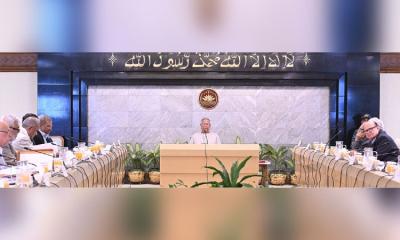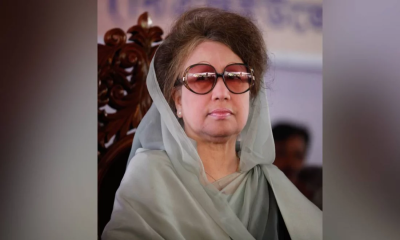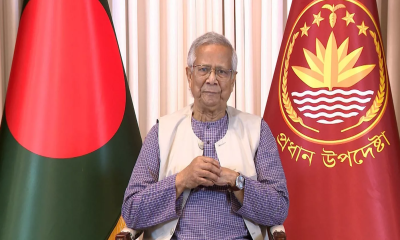A new generation of Bangladeshis is defining their country. They came of age in the 2013 Shahbagh protests. They started working amid unprecedented growth. Now they’re setting out their values.
This generation makes up a third of the population.
Women that entered the workforce have their sights set on equality and empowerment. Graduates are finding jobs at aid agencies and tech companies. Startups are creating new market opportunities.
Dhaka is scrambling for trade and investment from across the world.
It’s rare to open a newspaper in Bangladesh and not find stories about country’s future. Yet these stories rarely make it outside the country.
And when they do, they are reframed as esoteric questions about the country’s development or foreign relations – often from an Indocentric perspective.
Increasingly, though, efforts to repurpose Bangladesh have proven out of touch. And it’s reached an inflection point. India isn’t dealing with the Bangladesh it used to know.
This came into sharp focus when commentators began framing Bangladesh’s relationship with China as a problem for India. Their rhetoric questioned Dhaka’s decision-making and Bangladeshis’ loyalties. But more than anything, it showed that many couldn’t rationalise the country Bangladesh has become.
Indo-China relationship
The media’s news cycle started just over a year ago.
On April 17, 2020, India announced restrictions for investment from China. Just over two weeks later, on May 5, the first border clashes occurred between Chinese and Indian troops.
China’s existential threat had become tangible for many in India.
The Rashtriya Swayamsewak Sangh was ready for the front. Protesters burned effigies. Resident welfare associations boycotted Chinese made goods. Delhi’s Defence Colony declared war. It marked an intensification of anti-China sentiment that surfaced following the Covid-19 outbreak.
The media in India soon dragged Bangladesh into the fray.
A trade concession from China became a sign that Bangladesh was tilting away from India. The symbolism of diplomatic events legitimised fears that China would encircle India. Old news about China’s trade, investments and contracts with Bangladesh resurfaced as threats to India.
None of the speculation was substantiated. But it muddied the water sufficiently.
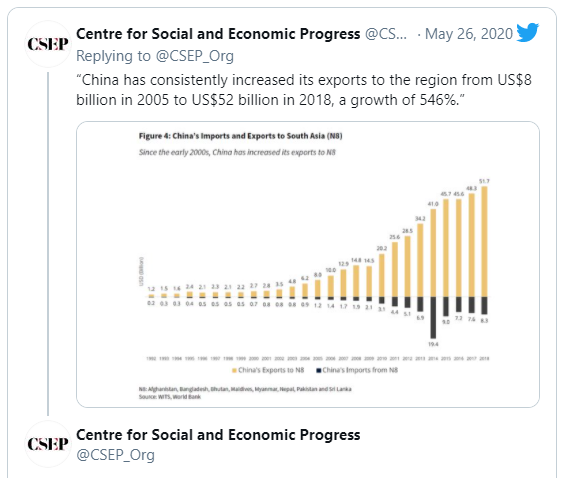
Global publishers produced headlines that ranged from sophomoric (“Two-timing – As Bangladesh’s relations with India weaken, ties with China strengthen”) to suspect (“Can China and Pakistan profit as Bangladesh turns from India?”) and severe (“China’s economic clout chills Bangladesh-India relations”).
Some journalists engaged in circular reporting. They repeated claims made by others without scrutiny. Others interviewed experts who described the media echo chamber as geopolitical competition. They conflated public discourse with real events.
Commentators had a field day.
What Beijing’s relationship with Dhaka meant for New Delhi had remained an open-question for years. But the question took on a new urgency in light of the military crisis in Ladakh. Whether Beijing would use trade and investment to influence Dhaka for strategic gain became a focal point.
‘Debt trap diplomacy’
Few explained how this could be achieved. Those who tried referenced the debt trap diplomacy theory, explicitly or implicitly. The theory has clouded thinking on Bangladesh for years.
According to this theory, Beijing convinced Dhaka to sign loans Bangladesh couldn’t afford. Beijing would then use its loans to influence Dhaka’s decision-making, or even seize infrastructure.
It looks far-fetched in plain English. But that’s what debt trap diplomacy means.
The term is most commonly used as a dog whistle by experts or officials interviewed by journalists. It’s hard to substantiate though. Journalists end up describing projected investment figures, or high-profile infrastructure projects, lending credence to theory’s narrative logic.
This creates a false balance between speculation and research that has debunked the theory. There may be many good reasons to worry about China. But debt trap diplomacy isn’t one. Let alone in Bangladesh, where Dhaka has, understandably, not borrowed more than it can afford.
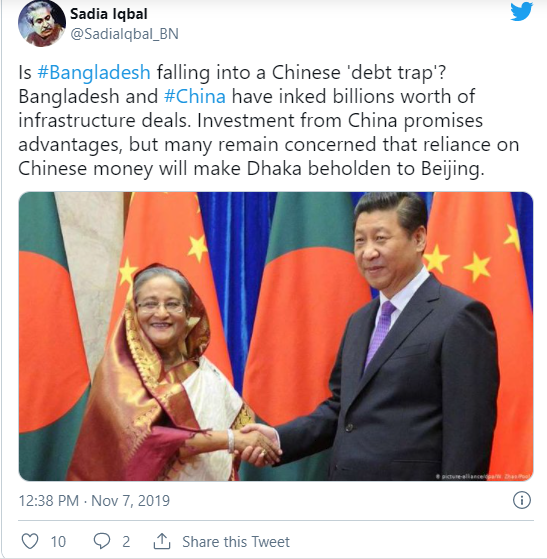
Was New Delhi taking a page from US spoiler Steve Bannon and “flooding the zone with shit”? It may have appealed to those who felt Beijing had bought strategic advantage from Dhaka.
The simplest explanation, though, is that stakeholders were experiencing a moment of weakness. While grappling with the loss of ground in Ladakh, it was easy to imagine the loss of face in Bangladesh.
India’s Neighborhood First and Act East policies are vague. China’s Belt and Road Initiative isn’t. China’s perceived influence in Bangladesh gave India a renewed sense of purpose.
This evolved into an “imaginary competition” for the chattering classes, according to Smruti S. Pattanaik, a research fellow at Institute for Defence Studies and Analyses.
They were shadowboxing.
China and India were predominant in this construct. It failed to acknowledge that Bangladesh has an array of economic partners, limiting the relevance of the zero-sum thought experiment.
Bangladesh gets most of its imports from China and India, but it’s offset by exports to the European Union and United States. China is a major investor in Bangladesh. But it held just 5.5% of Bangladesh’s foreign direct investment stock in 2020, well shy of several other countries, as well as Bangladesh largest investor, the US, which held a 20.9% share.
Beijing and New Delhi aren’t an either-or proposition. But the fallacy distorts thinking in other ways too.
When China’s “gain” in a Bangladesh is viewed as a “loss” for India, decision-makers in New Delhi may conflate Beijing’s interests with their own. Concerns over the number of Chinese companies building infrastructure in Bangladesh serve as a good example.
Many feel Indian companies should be more involved in projects that showcase Bangladesh’s rise. This interest, however, isn’t one the private sector can fulfil. Indian companies aren’t well-positioned to compete with companies from China – and other developed countries – for tenders in Bangladesh.
That reflects a disconnection between the role India can play and the role many want it to play.
When decision-makers try to bridge gaps like this with hubris, it can lead to overreach. This is what happened about ten years ago in Africa, where China’s growing market share inspired India’s government and private sector to find a judaad. It ended in corruption, fraud, and failure.
There is good news for Indians and Bangladeshis though.
Speculative commentary hasn’t compromised efforts to integrate the economies of India and Bangladesh. These efforts hold far more promise than any competition between China and India.
If the countries implement the Motor Vehicles Agreement, and sign a free trade agreement, India’s exports to Bangladesh increase by at least 172%, and Bangladesh’s exports to India by 297%.
This trade will raise income levels, and lower consumer prices, for Indians and Bangladeshis. Recent rail and maritime agreements should encourage a similar chain-like effect too.
It’s nothing to sniff at. These efforts lay a foundation for more lucrative trade agreements.
India and Bangladesh are members of the Bay of Bengal Initiative for Multi-Sectoral Technical and Economic Cooperation. The seven-country grouping wants to do an free trade agreement.
That free trade agreement would increase trade by 500% between BIMSTEC member countries.
China provides nothing more than background noise for dialogue over these opportunities. But politicians will need to show more backbone to prioritise national interests over special interests.
Free trade has become taboo in New Delhi. “Davos men” never sold “India’s story” to India. Politicians now advocate protectionism to achieve a Atmanirbhar Bharat or self-reliant India. Special interest groups don’t care that the domestic market is too small to generate strong growth on its own.
Dhaka has embraced their country’s export-led growth. But it has also shown a lack of enthusiasm for reforms needed for agreements with exporters’ largest markets. That’s a shame. Those reforms could address the concerns of multinationals that answer to consumers who want ethical supply chains.
These political concerns don’t have long shelf life though.
And the promise of connectivity and trade will remain undeniable. It’s an opportunity entrepreneurial people are unlikely to let down. Politicians could do a lot worse than getting in front of the parade.
This is the first in a five-part series on the India-Bangladesh relationship.


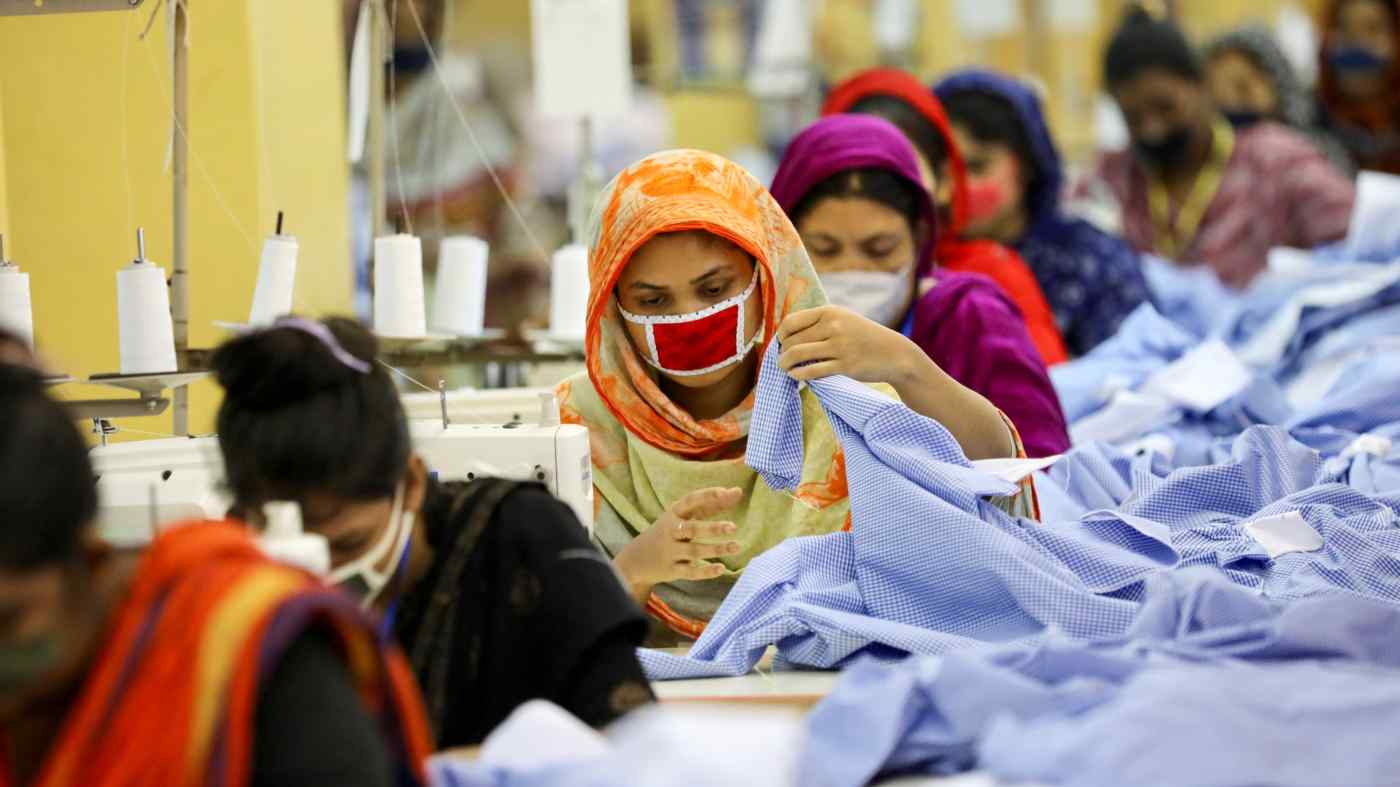


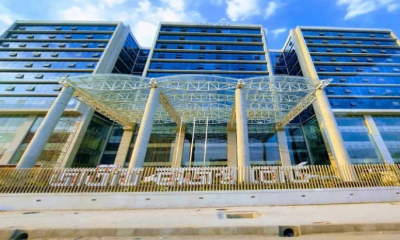
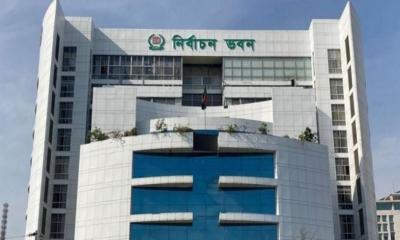

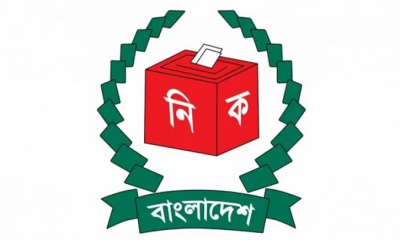

-20260106082251.webp)

-20260106073954.webp)
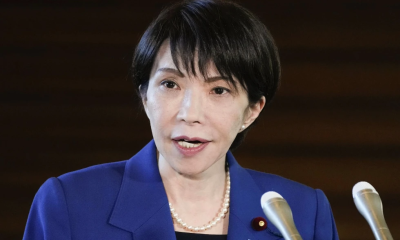




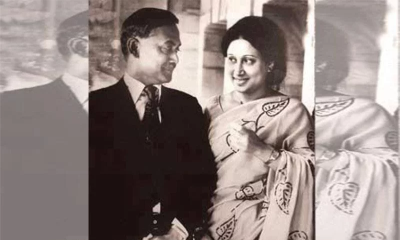

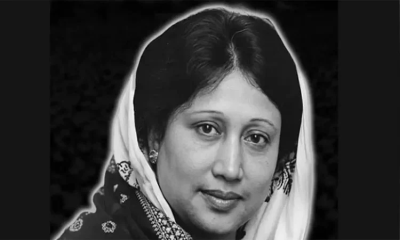
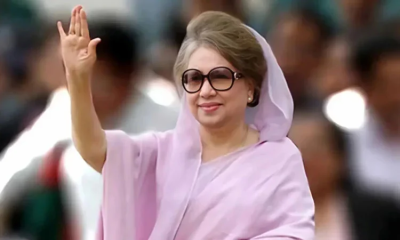


-(2)-20260102070806.jpeg)
-(25)-20251122062715-20260105041159.jpeg)


